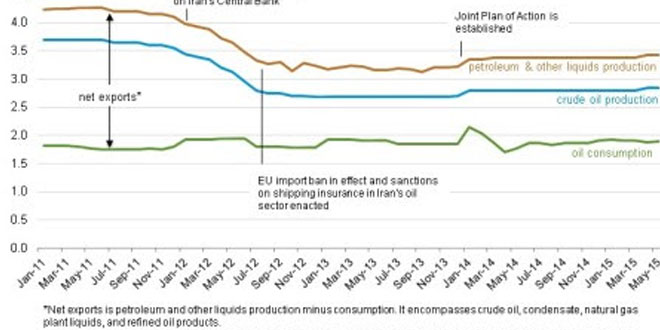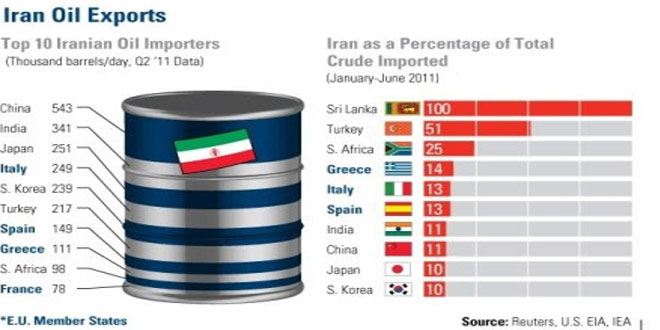
By Gaurav Agnihotri
July 14. 2015 was a turning point for the Islamic Republic of Iran as the US and the European Union reached an agreement through which Iran would curb its nuclear program in return for getting relief from the western sanctions imposed on its financial and energy sectors.
The economic restrictions that were imposed on Iran in 2012 are expected to be lifted in early 2016. Upon alleviation of the sanctions, Iran plans to immediately increase its production by 500,000 barrels per day followed by an additional 1 million barrels per day in March 2016. With most of the analysts and trade pundits predicting a bearish trend for oil prices in 2016, does Iran have a specific plan for its increased oil output?
When looking for clues, we find that Iran indeed has a plan as it is now looking for ways to expand its refining capacity. Is Iran planning to back itself up by building a market for its own crude oil or is it trying to hedge its bets in the uncertain energy market?

Iran is planning to invest in refineries located abroad
Iran’s Deputy Oil minister Abbas Kazemi confirmed on Wednesday that his country was indeed in talks with refiners from Asia, Latin America and Europe for investing in their set ups. “Buying refineries or shares of big foreign (crude) refining companies is one of Iran’s tactics in the post-sanction period.
Related: Besides Europe, Saudis To Capture Russian Market Share In China
The National Iranian Oil Company seeks to invest in (foreign) refineries which will process Iran’s crude oil. “This is also economical”, said Kazemi who further added that Iran was in discussion with India’s second biggest private refiner Essar Oil Limited.
Essar Oil Limited had earlier signed a term sheet (non-binding) with Russia’s Rosneft for a 49 percent stake sale. Although Essar’s representatives denied that Essar Oil Limited had any discussion with Iran, but one needs to note that India is Iran’s second biggest customer for crude oil.
$80 Oil By Christmas – Do NOT Be Fooled By The Mainstream Media
The current market turmoil has created a once in a generation opportunity for savvy energy investors.
Whilst the mainstream media prints scare stories of oil prices falling through the floor smart investors are setting up their next winning oil plays.
Click here for more info on successful oil investing
China and India have already shown interest in investing around $15 billion in Iran’s new projects. In addition, India’s private sector refineries are doing extremely well regarding the fact that they are posting some of the industry’s best gross refining margins. It is hardly surprising as to why Iran is so keen to invest in India’s refining sector where it expects to find a market for its increased oil production.
Is Iran backing itself or is it hedging its bets in the future?
Due to the economic sanctions, Iran’s crude oil exports dropped to a mere 1 million barrels per day in July 2012 as deliveries to China, India, South Korea and Japan were adversely affected. Now, as Iran seeks to increase its production and/exports in 2016, it has set its sights on the Asian market which has historically been its biggest cash cow. Big consumers of Iranian oil such as India and South Africa are keen to increase their imports of the Iranian crude. In fact, South Africa is even planning to build a refinery in collaboration with Iran.

Moreover, when we look at another Middle Eastern oil giant, Saudi Arabia, we see it has now become a major global refining power apart from being a major exporter of crude oil. Saudi Arabia has created a strong ‘internal market’ for its own crude oil. And even though the market for refined products such as diesel is saturated, the demand for gasoline is still going strong and margins in the downstream sector are still better than the upstream markets.
Iran is keen to follow a similar strategy of creating a strong ‘internal market’ for its own crude oil. So, on one hand , Iran is making sure that it regains its lost market share, on the other hand it is hedging its bets by looking to invest in countries like India and South-Africa whose downstream sector is doing exceptionally well as compared to the overall markets.
 khalijefars News, Blogs, Art and Community
khalijefars News, Blogs, Art and Community








